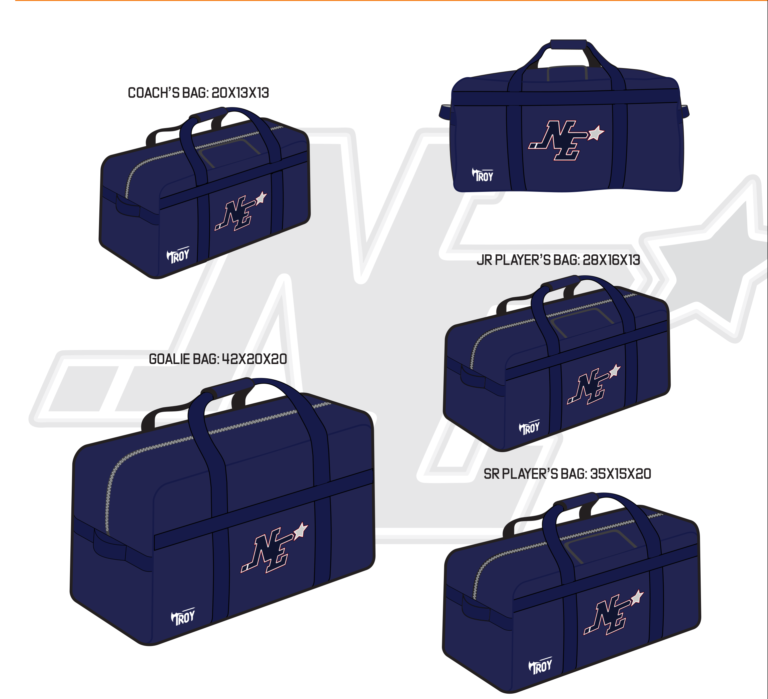Selecting the right hockey bag size for an 11-year-old ensures comfort, organization, and efficiency. With various options available, it’s crucial to understand the factors that make a hockey bag suitable for young players. This guide covers everything from bag dimensions to types and features, ensuring you make an informed decision.
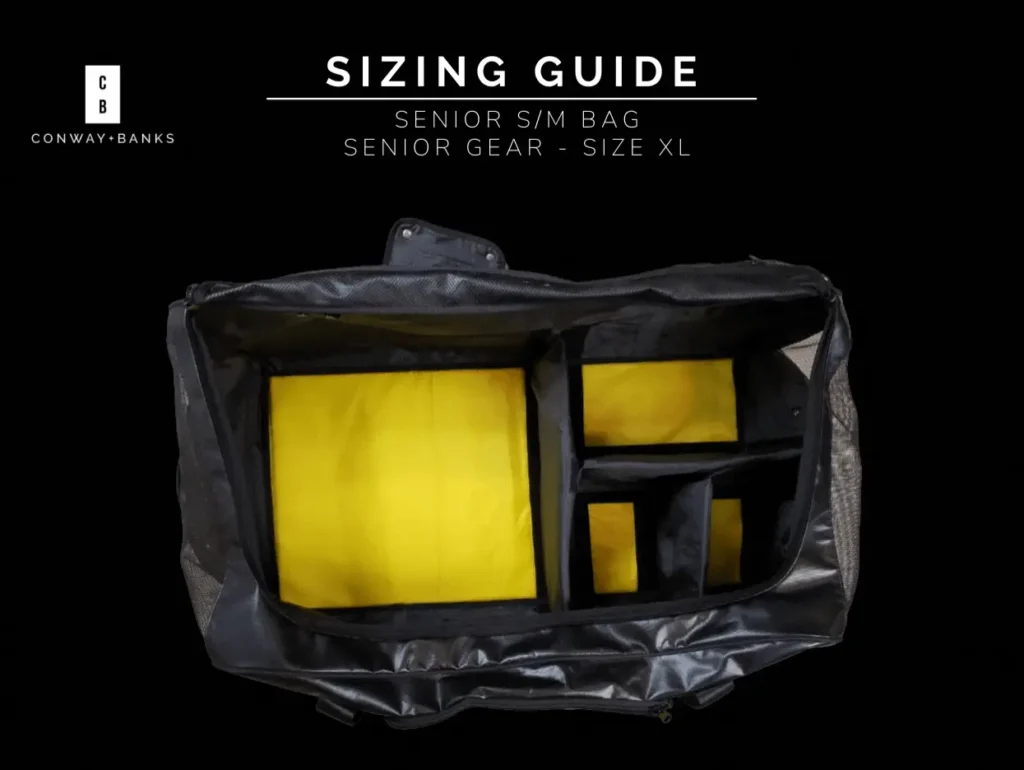
Top Key Takeaways for Choosing the Right Hockey Bag Size for an 11-Year-Old
- Size Matters: Ensure the hockey bag dimensions (30-36 inches in length, 12-14 inches in width, and 12-15 inches in height) match your child’s gear for optimal fit and comfort.
- Material Quality: Opt for durable, water-resistant, or waterproof fabrics like ripstop nylon or polyester to withstand wear and tear.
- Comfort is Key: Look for adjustable, padded shoulder straps and an ergonomic design to balance the bag’s weight and enhance carrying comfort.
- Organizational Features: Choose a bag with multiple compartments, including ventilated sections and mesh pockets, to keep gear organized and fresh.
- Weight Distribution: Test the bag’s balance when loaded with gear and adjust straps and handles to ensure it’s comfortable for your child to carry.
- Brand and Type Options: Compare different brands (Bauer, CCM, Warrior) and bag types (carry, wheeled, hybrid) to find the best fit for your child’s needs and preferences.
- Efficient Packing: Roll clothing, use compression straps, and organize gear by type to maximize space and ensure easy access to frequently used items.
- Warranty and Return Policy: Verify the manufacturer’s warranty and return policy to safeguard against defects and ensure the bag meets your expectations.
Why is the Right Hockey Bag Size Important for an 11-Year-Old?
Choosing the correct hockey bag size is more than just convenient. It plays a significant role in a young player’s comfort, gear organization, and overall experience.
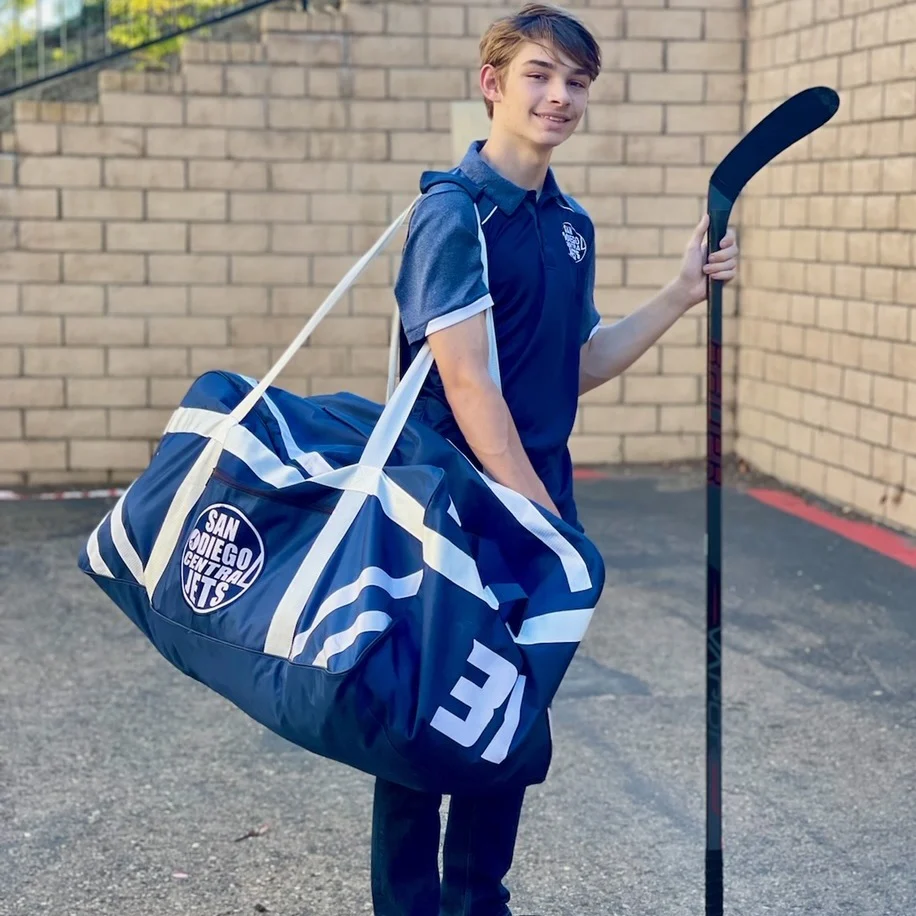
How Does the Correct Bag Size Affect a Young Player’s Comfort?
A properly sized hockey bag provides the right balance of space and manageability. An oversized bag can cause difficulty in handling, while an undersized bag may lead to cramped conditions for the equipment. Both scenarios impact the player’s comfort and can lead to unnecessary strain.
What Are the Key Factors in Ensuring Comfort?
- Adjustable Straps: Allow customization to fit the player’s body size.
- Padded Shoulder Straps: Help reduce pressure on the shoulders.
- Ergonomic Design: Ensures proper weight distribution.
What Are the Consequences of Using an Oversized or Undersized Hockey Bag?
Oversized Bags:
- Difficulty in Handling: This can cause awkward carrying or dragging.
- Increased Risk of Injury: Excess weight can strain muscles.
Undersized Bags:
- Limited Space: May not fit all necessary gear.
- Disorganization: This can lead to difficulty in finding and accessing equipment.
How to Determine if a Bag is the Right Size?
- Check the Dimensions: Ensure it matches the recommended size for the age group.
- Assess the Gear Fit: Verify that all equipment fits comfortably without being squeezed.
How Does a Well-Fitted Bag Reduce Strain on the Body?
A well-fitted bag minimizes strain by evenly distributing weight across the back and shoulders. This prevents overloading on one side and reduces the risk of musculoskeletal issues.
Key Features That Aid in Weight Distribution
- Compression Straps: Help secure the load and balance weight.
- Adjustable Handles: Allow for easy carrying or rolling.
Why Does a Properly Sized Bag Contribute to a Better Organization?
A correctly sized bag offers ample space and structured compartments to keep gear organized. This helps the player quickly access equipment and maintain a tidy setup.
Features that Enhance Organization
- Divided Compartments: Separate pads, skates, and other items.
- Mesh Pockets: For storing wet or smaller items.
- Zippered Sections: To keep personal items secure.
How Does Bag Size Impact Ease of Access to Hockey Gear?
A bag with appropriate dimensions ensures that gear is easily accessible. Large or small pockets can either facilitate or hinder the quick retrieval of essential items.
Tips for Improving Access
- Front Access Pockets: For frequently used items.
- Side Pockets: For items like water bottles and small gear.
What Organizational Features Should a Hockey Bag Have for an 11-Year-Old?
- Ventilated Sections: To keep gear fresh and dry.
- External Straps: For carrying sticks or additional items.
- Name Tags: To personalize and easily identify the bag.
Checklist for Choosing the Right Hockey Bag Size for an 11-Year-Old
- Determine the Bag Size
- Measure your child’s hockey gear.
- Verify bag dimensions: Length (30-36 inches), Width (12-14 inches), Height (12-15 inches).
- Check Material Quality
- Ensure the bag is made from water-resistant or waterproof fabric.
- Look for durable materials like ripstop nylon or polyester.
- Assess Comfort Features
- Confirm the bag has adjustable, padded shoulder straps.
- Check for an ergonomic design to balance weight distribution.
- Evaluate Organizational Features
- Ensure the bag includes divided compartments for gear.
- Look for ventilated sections to keep gear fresh.
- Verify the presence of mesh and zippered pockets for smaller items.
- Test Weight Distribution
- Load the bag and assess balance when carried.
- Adjust straps and handles for comfort and proper fit.
- Inspect Bag Features
- Check for external straps for hockey sticks.
- Verify adequate compartments for all gear.
- Compare Brand Options
- Review different brands (e.g., Bauer, CCM, Warrior) for size and features.
- Consider brand-specific features and customizations.
- Select Bag Type
- Choose between carry bags, wheeled bags, or hybrid bags.
- Consider the ease of transport and space requirements.
- Plan Efficient Packing
- Roll clothing to save space and reduce bulk.
- Use compression straps to secure gear.
- Organize gear by type (e.g., pads, skates).
- Store frequently used items in easily accessible pockets.
- Review Warranty and Return Policies
- Check the manufacturer’s warranty for durability.
- Verify the return policy in case the bag does not meet your needs.
Essential Factors for Selecting the Ideal Hockey Bag Size for 11-Year-Olds
Key Features of an Ideal Hockey Bag
- Size Dimensions:
- Length: 30-36 inches
- Width: 12-14 inches
- Height: 12-15 inches
- Material:
- Water-resistant or waterproof fabric
- Durable ripstop nylon or polyester
- Comfort Features:
- Adjustable, padded shoulder straps
- Ergonomic design for balanced weight distribution
- Organizational Elements:
- Divided compartments for organized gear
- Ventilated sections to keep gear fresh and dry
- Mesh and zippered pockets for smaller items
Steps to Ensure the Perfect Fit for a Hockey Bag
- Measure Equipment:
- Confirm that the bag’s dimensions align with the gear size.
- Ensure that all items, such as skates and helmets, fit comfortably.
- Check Weight Distribution:
- Load the bag and assess balance.
- Adjust straps and handles for comfort.
- Evaluate Bag Features:
- Look for external straps for sticks.
- Ensure adequate compartments for gear organization.
- Compare Brands and Models:
- Review options from Bauer, CCM, and Warrior.
- Consider brand-specific features and customizations.
Recommended Hockey Bag Types for 11-Year-Olds
- Carry Bags:
- Lightweight and easy to manage
- Typically more affordable
- Wheeled Bags:
- Ease of transport with wheels
- Additional space and compartments
- Hybrid Bags:
- Versatile with both carrying and wheeling capabilities
- Combines features of both carry and wheeled bags
Tips for Efficient Packing of a Youth Hockey Bag
- Roll Clothing:
- Save space and reduce bulk.
- Use Compression Straps:
- Secure gear and prevent shifting.
- Organize by Type:
- Group similar items together (e.g., pads, skates).
- Prioritize Accessibility:
- Store frequently used items in easily accessible pockets.
What Size Hockey Bag is Best for an 11-Year-Old?
Determining the best hockey bag size involves considering standard dimensions and ensuring it fits the player’s needs.
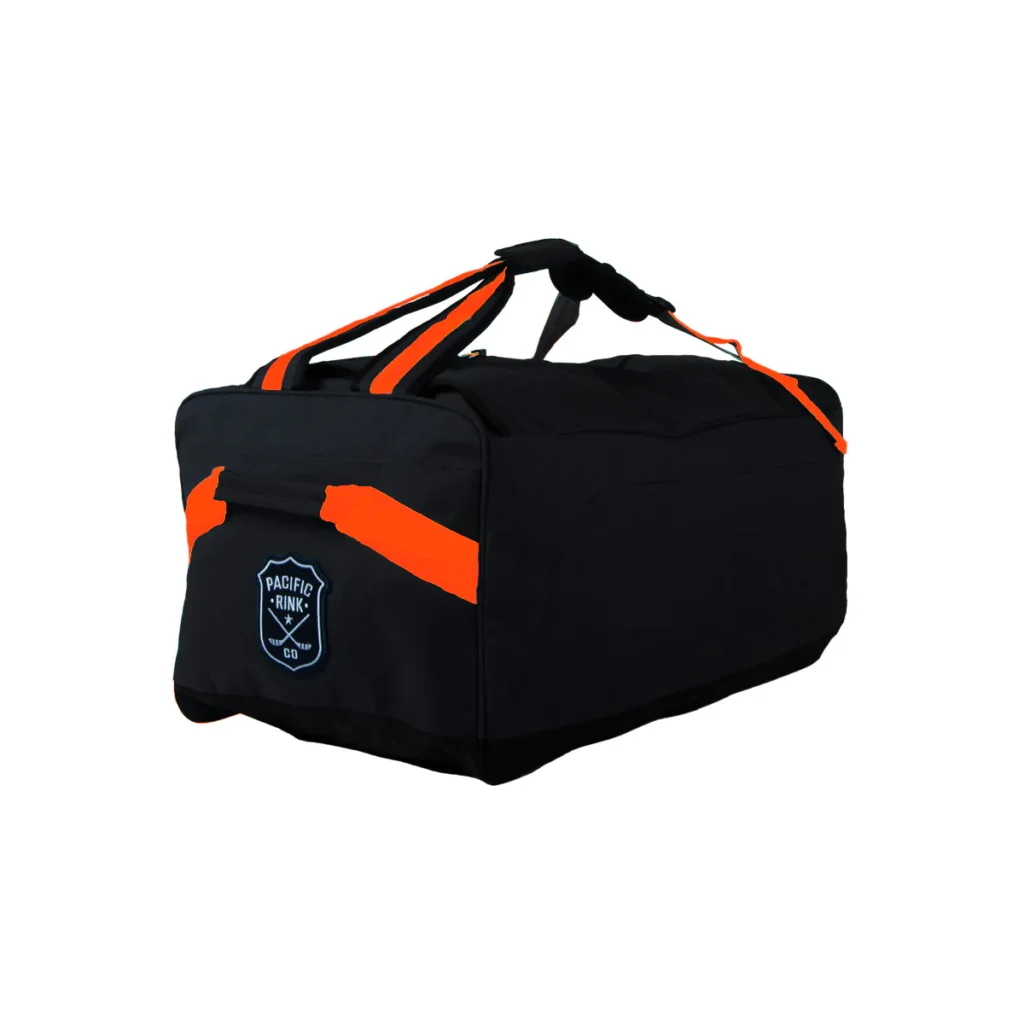
What Are the Recommended Hockey Bag Dimensions for 11-Year-Olds?
Typical Dimensions:
- Length: 30-36 inches
- Width: 12-14 inches
- Height: 12-15 inches
These measurements offer enough space for essential gear while remaining manageable.
How to Measure Your Hockey Bag?
- Length: Measure from end to end.
- Width: Measure from side to side.
- Height: Measure from top to bottom.
What Size Should a Standard Youth Hockey Bag Be?
A standard youth hockey bag should align with the dimensions provided to comfortably fit equipment without being cumbersome.
Ideal Bag Size for Common Equipment
- Skates: Fit comfortably in dedicated compartments.
- Helmet: Should be securely stored without compressing.
How Much Equipment Should the Bag Comfortably Fit?
A well-sized bag should fit:
- Skates
- Helmet
- Pads
- Gloves
- Stick
- Protective Gear
Tips for Packing Efficiently
- Roll Clothing: To maximize space.
- Use Compression Straps: To reduce bulk.
How Do Brand-Specific Bag Sizes Differ?
Different brands offer varying dimensions and features tailored to specific needs. Understanding these differences can help in selecting the right bag.
Major Brands and Their Sizes
- Bauer: Known for its diverse range of sizes.
- CCM: Offers durable options with specific dimensions.
- Warrior: Provides unique sizes and customization.
What Sizes Do Popular Brands Like Bauer, CCM, and Warrior Offer?
- Bauer: Sizes from small youth to intermediate.
- CCM: Various models with different dimensions.
- Warrior: Customizable options with varying sizes.
Comparing Brand Specifications
- Bauer: Lightweight and innovative designs.
- CCM: Robust and functional.
- Warrior: Customizable and versatile.
Are There Variations in Bag Sizes Based on Product Lines or Models?
Yes, within each brand, different product lines and models have unique dimensions and features. Reviewing specific product details helps find the best fit.
How to Choose the Right Model?
- Check Product Reviews: For insights into size and usability.
- Compare Features: To match the player’s needs.
What Types of Hockey Bags Are Available for Youth Players?
Hockey bags come in various types, each offering different benefits and drawbacks.
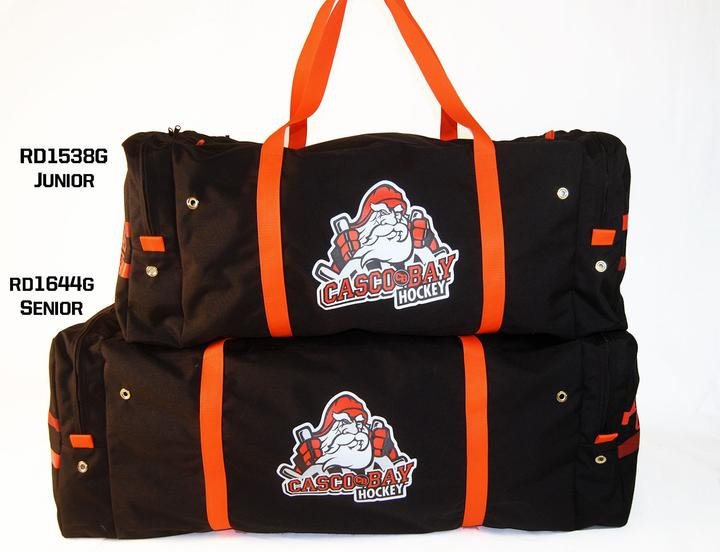
What Are the Pros and Cons of Traditional Carry Hockey Bags for 11-Year-Olds?
Pros:
- Lightweight: Easier for younger players to manage.
- Cost-Effective: Generally more affordable.
- Simple Design: Straightforward and functional.
Cons:
- Limited Space: May not accommodate all gear comfortably.
- Carrying Strain: Can cause discomfort if overloaded.
Best Practices for Using Carry Bags
- Adjust Straps Properly: For comfortable carrying.
- Pack Efficiently: To maximize space and balance weight.
How Practical Are Carry Bags for Youth Players?
Carry bags are practical for players with lighter gear and those who prefer a hands-on approach. They are easy to maneuver and generally offer good access to equipment.
Advantages of Carry Bags
- Maneuverability: Easy to handle.
- Cost: Typically lower-priced.
Do Traditional Bags Provide Enough Space for Gear While Remaining Lightweight?
Traditional carry bags provide sufficient space for most youth hockey gear while maintaining a lightweight profile.
Considerations for Space and Weight
- Balance: Ensure the bag is not too heavy when packed.
- Compartment Design: Check for adequate space for all items.
How Do Wheeled Hockey Bags Compare to Carry Bags for 11-Year-Olds?
Wheeled bags offer distinct advantages and potential challenges compared to carry bags.
Advantages of Wheeled Bags
- Ease of Use: Reduce physical strain by rolling rather than carrying.
- Increased Space: Often provides more room for gear.
- Convenience: Easier to transport over long distances.
Disadvantages of Wheeled Bags
- Bulkiness: Can be larger and harder to fit in small spaces.
- Cost: Often more expensive than carry bags.
Are Wheeled Bags Easier for Younger Players to Manage?
Wheeled bags are generally easier for younger players to manage, as they can roll the bag rather than carry it, reducing physical strain and making transportation more convenient.
Tips for Using Wheeled Bags
- Check Wheel Quality: Ensure they are durable and smooth.
- Handle Adjustability: Look for adjustable handles for better maneuverability.
How Much Additional Space Do Wheeled Bags Offer for Equipment Storage?
Wheeled bags often provide more space due to their larger dimensions and additional compartments, making it easier to organize and access gear.
Space Comparison: Wheeled vs. Carry Bags
- Wheeled Bags: Larger capacity and more compartments.
- Carry Bags: Limited space but more compact.
Are Hybrid Bags a Good Option for Youth Players?
Hybrid bags combine the features of both carry and wheeled bags, offering flexibility and versatility.
Advantages of Hybrid Bags (Carry + Wheels)
- Versatility: Can be used as both a carry and wheeled bag.
- Convenience: Provides the benefits of both types depending on the situation.
Choosing a Hybrid Bag
- Check the Conversion Mechanism: Ensure it’s easy to switch between carry and wheel modes.
- Evaluate Durability: Look for sturdy construction to handle both uses.
How to Choose the Best Hockey Bag for an 11-Year-Old
Selecting the best hockey bag involves evaluating various factors to ensure it meets the young player’s needs effectively.
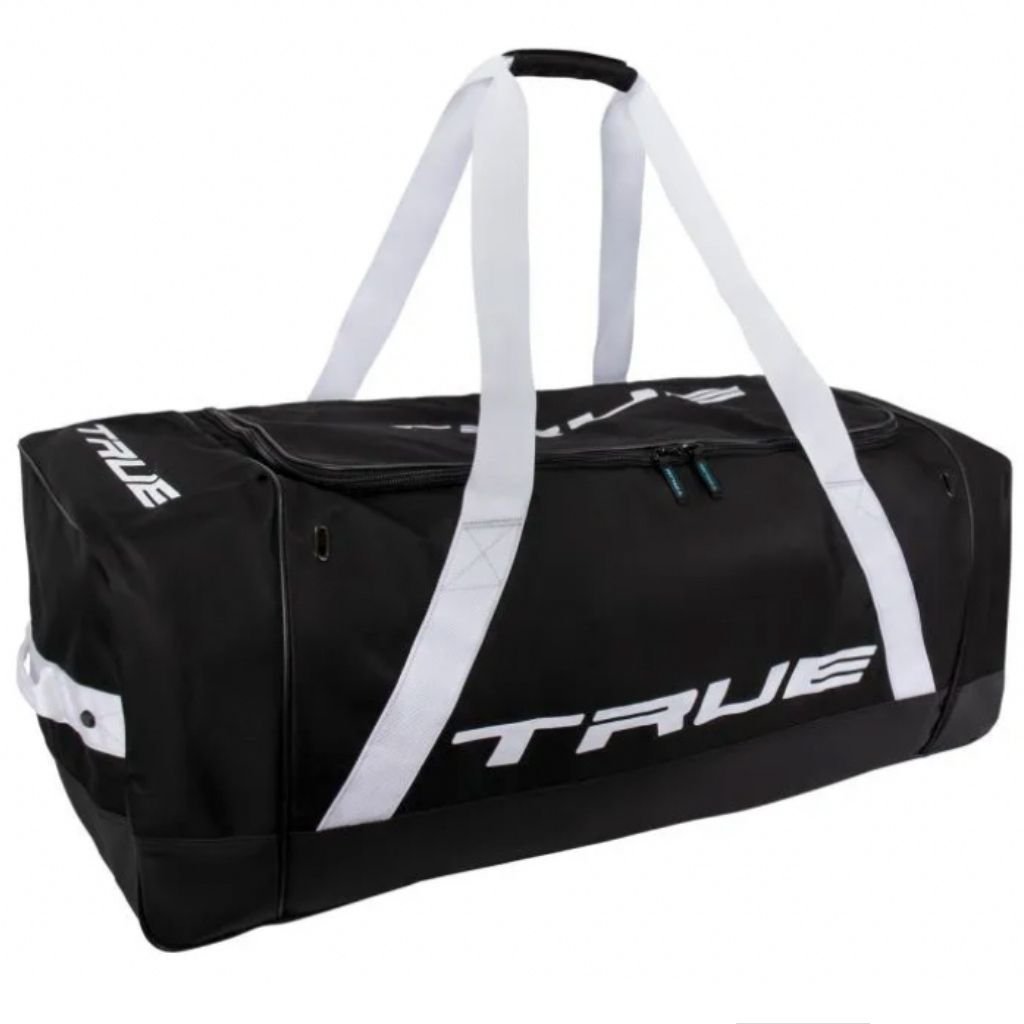
What Factors Should Be Considered When Selecting a Hockey Bag?
- Size: Ensure the bag fits the player’s gear and is manageable.
- Material: Opt for durable, water-resistant fabrics.
- Comfort: Look for padded straps and ergonomic design.
Evaluating Bag Features
- Strap Padding: For comfortable carrying.
- Material Quality: For
Conclusion
Selecting the right hockey bag size for an 11-year-old is a crucial decision that impacts both the comfort and performance of young players. The ideal bag dimensions—typically 30-36 inches in length, 12-14 inches in width, and 12-15 inches in height—ensure that all hockey gear fits comfortably and is easy to transport. High-quality materials such as ripstop nylon or polyester, along with thoughtful design features like adjustable straps and multiple compartments, play a significant role in enhancing the bag’s functionality and durability.
For parents and guardians in [your city], understanding the balance between size, comfort, and organizational features is key to choosing a hockey bag that meets their child’s needs. A well-chosen bag not only reduces physical strain but also improves gear management, making the game more enjoyable for young players.
By considering factors such as bag type (carry, wheeled, or hybrid), brand reputation, and efficient packing strategies, you can ensure that the chosen hockey bag will support your child’s athletic activities throughout the season. Investing in a bag with a good warranty and performing regular maintenance will further extend its lifespan, providing long-term value.
Ultimately, the right hockey bag size for an 11-year-old enhances their overall experience, allowing them to focus on their game rather than struggling with inadequate or poorly designed gear. Making an informed choice will contribute significantly to their comfort, organization, and enjoyment on the ice.
Frequently Asked Questions About Choosing the Right Hockey Bag Size for an 11-Year-Old
What size hockey bag is best for an 11-year-old?
When selecting the ideal hockey bag size for an 11-year-old, it’s crucial to choose dimensions that accommodate their gear comfortably. For most 11-year-olds, a hockey bag should be approximately 30-36 inches in length, 12-14 inches in width, and 12-15 inches in height. This size range ensures that all essential hockey equipment, including skates, helmets, and pads, fits well without causing strain. Opt for a bag made of durable materials like ripstop nylon or polyester to handle wear and tear during regular use.
How does the right hockey bag size impact comfort for young players?
The correct hockey bag size plays a significant role in a young player’s comfort. A properly sized bag helps in evenly distributing the weight of the gear, reducing the risk of back and shoulder strain. For instance, an 11-year-old hockey player will benefit from a bag with adjustable, padded shoulder straps that ensure a snug fit without excessive bulk. Ergonomic designs that balance weight are essential for maintaining comfort during transport to and from games and practices.
What are the consequences of using an oversized or undersized hockey bag?
Using a hockey bag that is either too large or too small can lead to several issues. An oversized bag might cause unnecessary strain on the player’s back and shoulders due to the excessive weight and awkward handling. Conversely, an undersized bag may not fit all necessary equipment, leading to an overstuffed bag that can damage gear and create a less organized space. For 11-year-olds, finding the right size is critical to avoid these problems and ensure both safety and efficiency in carrying their hockey gear.
How does a well-fitted hockey bag reduce strain on the body?
A well-fitted hockey bag reduces bodily strain by ensuring that the weight is distributed evenly. This prevents excessive pressure on any single point, particularly the shoulders and back. For young players, a properly sized bag with adjustable straps and ergonomic design features helps in achieving a balanced load. This is crucial for 11-year-olds who are still developing their strength and posture, making comfort and proper fit paramount.
Why is it important to consider organizational features in a hockey bag for 11-year-olds?
Organizational features in a hockey bag are essential for keeping gear in order and easily accessible. For 11-year-olds, bags with multiple compartments, mesh pockets, and ventilated sections help in efficiently storing and retrieving hockey equipment. Choosing a bag with these features can improve overall organization, reduce clutter, and make it easier for young players to manage their gear during games and practices.
How does bag size impact transportation and storage?
Bag size significantly affects both transportation and storage. A hockey bag that is too large may be cumbersome to carry and might not fit in vehicle storage compartments easily. For 11-year-olds, it’s essential to choose a bag that can be comfortably carried or wheeled, depending on their strength and preference. Properly sized bags also ensure that they can be stored efficiently at home or in a locker, avoiding unnecessary clutter and space issues.
What are the benefits of using a wheeled hockey bag compared to a carry bag?
Wheeled hockey bags offer several advantages over traditional carry bags. They provide ease of transport, especially when loaded with heavy equipment. For 11-year-olds, a wheeled bag can reduce physical strain and make it simpler to navigate through various locations, such as parking lots or arenas. Additionally, wheeled bags often have extra compartments, offering more space for gear and improving overall organization compared to standard carry bags.
What should be included in a youth hockey bag for an 11-year-old?
A well-equipped youth hockey bag for an 11-year-old should include compartments for all necessary gear. This typically encompasses space for skates, helmets, shoulder pads, elbow pads, gloves, and a stick. For players, ensuring the bag has ample room and organizational features for each piece of equipment will help in maintaining order and ease of access. Additionally, consider a bag with a water-resistant feature to protect gear from moisture.
How can I ensure my child’s hockey bag lasts through the season?
To ensure the longevity of your child’s hockey bag, select one made from durable, high-quality materials like ripstop nylon or polyester. Regular maintenance is also crucial. For 11-year-olds, clean the bag regularly to prevent odors and damage. Check for wear and tear on seams and zippers, and promptly repair any issues to extend the bag’s lifespan. Opting for a bag with a manufacturer’s warranty can also provide additional peace of mind.
What are the top brands of hockey bags suitable for 11-year-olds?
Several top brands offer high-quality hockey bags that are suitable for 11-year-olds. Brands like Bauer, CCM, and Warrior provide various options that cater to different needs and preferences. For players, exploring these brands can help in finding a hockey bag with the right size, features, and durability. Each brand offers unique designs and specifications, so comparing these can ensure you find the best fit for your child’s requirements.

